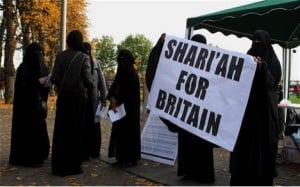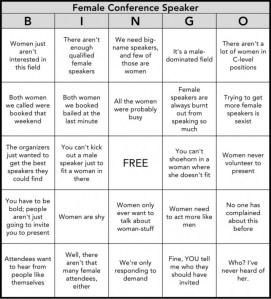
Israel’s war on the Palestinians may be over for now, but the conflict remains. About a week and a half ago, I received an email from a wonderful organization, Jewish Voice for Peace, asking me to sign onto a letter to President Obama asking him to create a just foreign policy regarding Israel and Palestine. The title of the email was “Hope,” obviously referencing President’s Obama’s slogan, and the artistic effects of the pictures accompanying the email mirrored Obama’s now internationally famous image used during the campaign. The images, seen above, depict an Israeli Jewish woman and a Palestinian woman who is very obviously Muslim.
First, it seems using pictures of women creates a soft effect. Women are often depicted as representations of peace and reconciliation. Their expected or assumed maternal nature works to create a safe space in which people can engage without fear. Perhaps that was the reason for using the pictures of women.
However, more interesting and more relevant to this conversation is the way in which the Palestinian woman is drawn and how this reflects a phenomenon much bigger than this picture. She is, as already mentioned, Muslim – and a Muslim with hijab at that. And this image of the Palestinian woman brings up an interesting phenomenon surrounding the international outrage regarding the recent conflict. During this recent tragic conflict the outrage around the world that became a part of the Palestinian cause, ended up becoming a Muslim cause.
At protests one would easily and commonly hear Islamic rallying cries, such as the kalma, being yelled out along with the non-religious ones. Many Muslims felt this was an attack on Muslims, not just Palestinians. Muslims all over the world were enraged and very active and vocal about their outrage. So much so that many Muslims and non-Muslims alike wondered where this rage was for other issues, such as Darfur. When the killing is on a much larger scale in Darfur against African Muslims, Muslim outrage is limited to press releases. Others defended this unbalanced outrage by saying that because the rest of the world has for so long ignored the suffering of the Palestinians, Muslims needed to bring attention to the cause. However, the imbalance still exists – and so does the genocide in Darfur.
And then what about the Christian Palestinians, who suffer as much as the Muslim ones? This conflict is not about Jew against Muslim, but rather Israeli against Arab, specifically Palestinians, many of whom are Christian. Why did we not hear about them? Why have an obviously Muslim woman in the picture above? What about the Christian Palestinian women?
And what about all the non-Muslims who came out to the protests? When I would hear Islamic rallying cries at protests, I couldn’t help but wonder if some of them questioned why they were even at the protests. If this was a Muslim cause, and they weren’t Muslims, then should they even be there?
And then there were the issues of race as well. Are Muslims more upset about this because Arabs are the victims, whereas in Darfur it is black Africans, in Kashmir it is Indians, in Chechnya it is Chechens? Has the racism within the Muslim world spilled into and affected the causes we support as a whole?
Why has this become a Muslim cause and what are the implications?
These are just some questions that come to mind when I view images such as the one presented above. What are readers’ thoughts on the issue?











